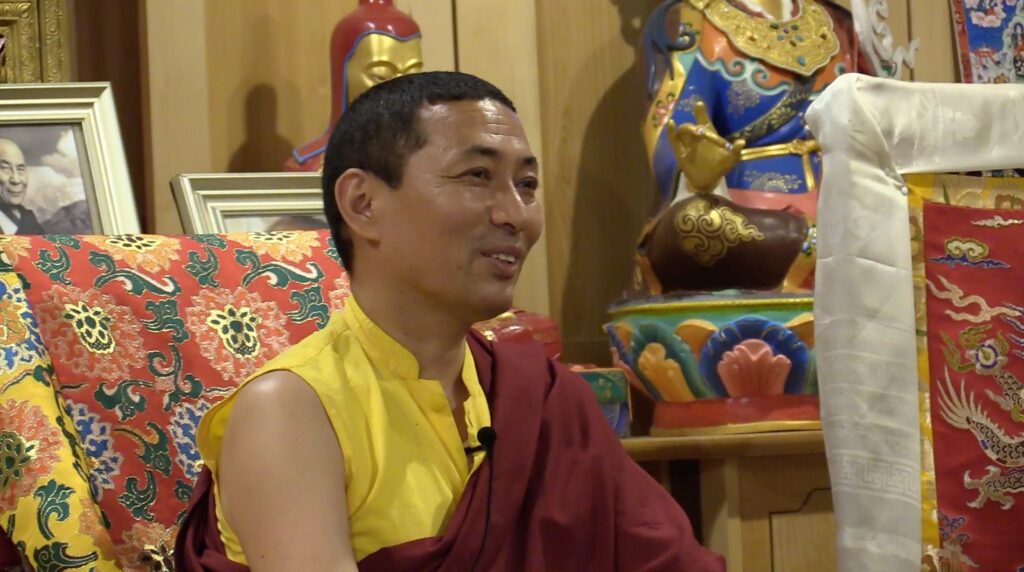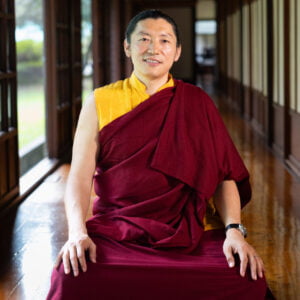Continuous placement, or establishing continuity, is the second stage of calm abiding meditation. When we practice calm-abiding or shamatha meditation, we’re gradually retraining our minds. In the second part of his teaching on beginning a meditation practice, Tulku Migmar reminds us that having placed our mind, we will probably find the crazy elephant that begins to wander off in unexpected directions. Here, Tulku teaches in Tibetan and we offer an English translation.
Continuous Placement (gyündu jokpa): Returning to Our Object of Focus

But this is an interesting opportunity! If we can manage to notice this right away, we don’t have to follow the elephant. When our mind starts to wander (and it will!) we gently bring it back to its object of focus. We practice continuous placement by returning to the flower, or the rock, or the breath, or to sound. And we do this without judging ourselves. Simply notice the elephant has wandered, and bring it back.
Tulku-la advises us that as we practice this continuous placement for 3-5 minutes, we will probably notice many thoughts popping into our minds. These might seems very random. We might think about things in the past. Or we could experience strong emotions or feelings. All of sudden, it may seem, we have so much going on. And then, when that happens many people think that they have made a mistake–something is wrong–this shouldn’t be happening! We may think we are failing at meditation! Here, Tulku-la laughs as he explains this common misperception. So many of us blame ourselves instead of seeing the humor of this situation.
Continuous Placement: Notice the Wandering Mind
But here we can encourage ourselves. When we practice continuous placement we don’t have more thoughts than we had before. In fact, we are making a big step in managing our minds. We are noticing when the mind wanders and how many thoughts we have. Normally we don’t pay any attention to that process. How many times have you wandered down a rabbit-hole on the internet? Or do you know the feeling of walking into a room and forgetting why you went there? Most of us can relate to these experiences, right?
So, as we look at our minds curiously, we begin to notice all the wandering activity–and that is a great sign! In the beginning, we are unable to eliminate or reduce all these thoughts and emotions. And that is ok! We can reassure ourselves that slowly, as we practice continuous placement regularly, we will experience less turbulence.
Meditation Exercise and Further Investigation
If you missed the first part of this teaching, you can review the teaching Everyone Can Meditate. Just as in that teaching, you can choose whichever object of focus you prefer. As you sit with that object be aware that your mind wanders off and returns to familiar habits. Your job as you practice continuous placement is to notice that–and gently return the mind to its object of focus. Try to do this with a sense of humor, curiosity, and awareness.
Did you ever realize how distracted you were before? How does it feel to let the mind rest–even for a minute or two? After you try this for a number of weeks, do you observe any changes?
After working with continuous placement for a while, check out the final teaching in this series Repeated Placement: Once Again Resting the Mind.










Responses